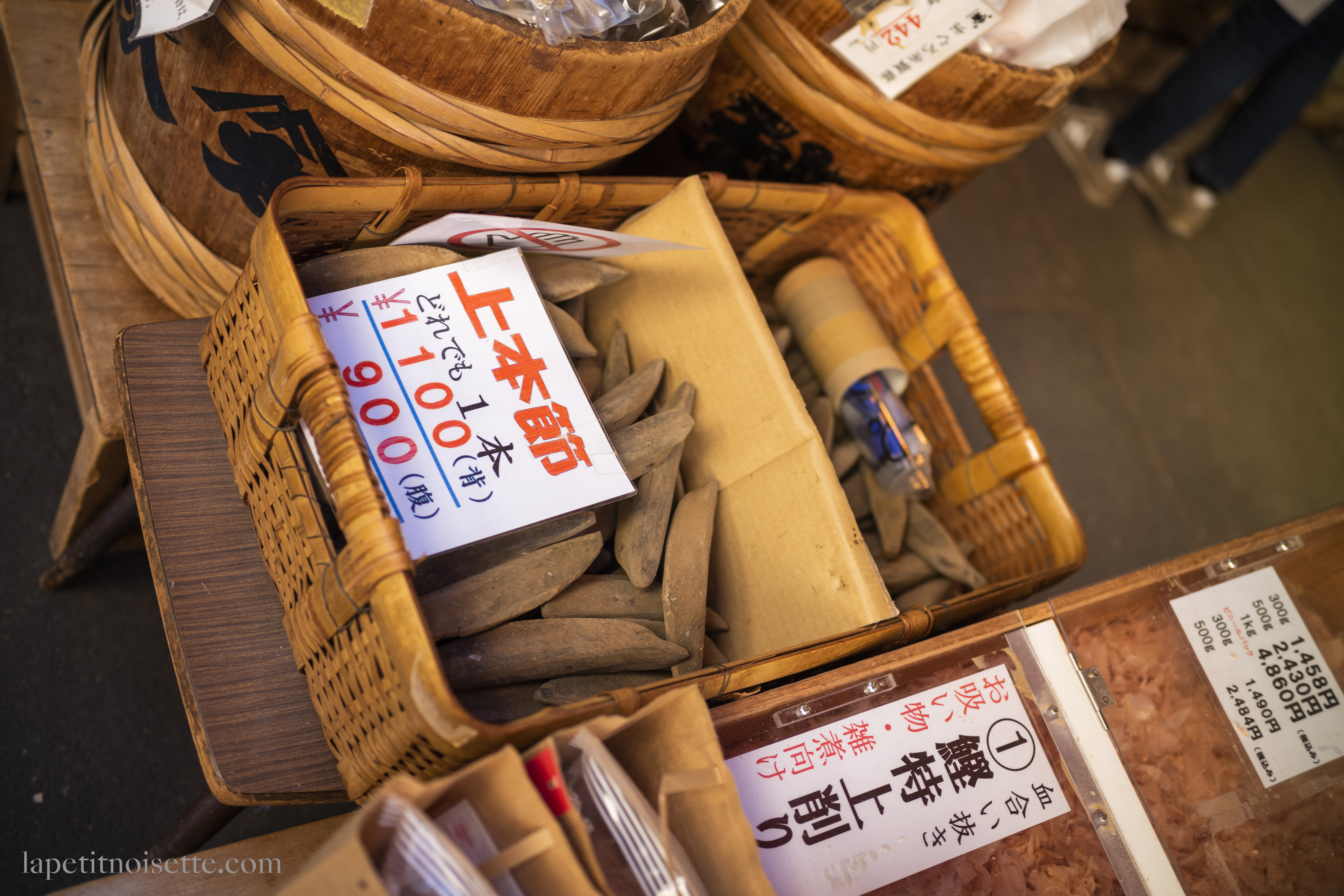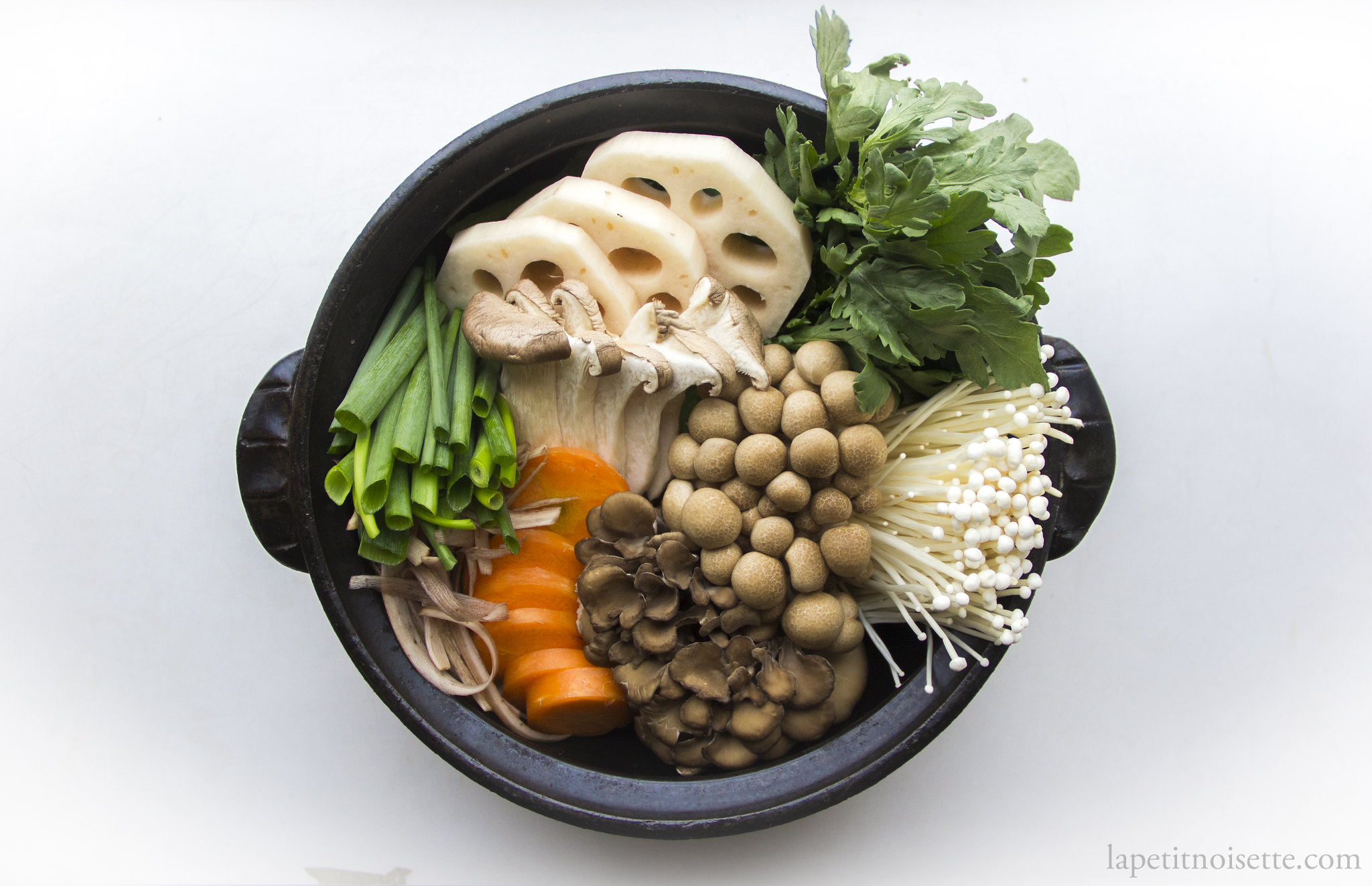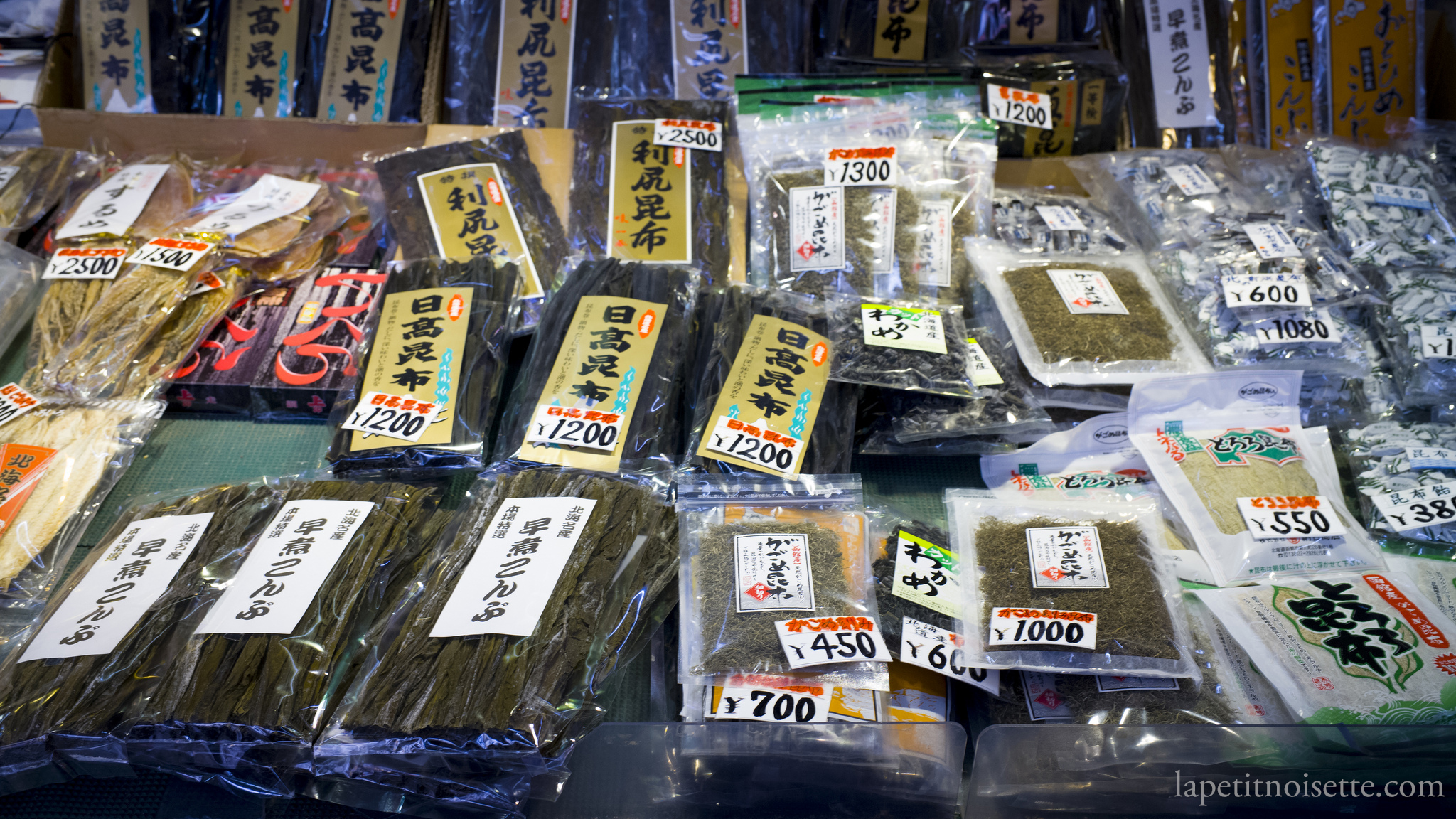This article continues from 4. How to Shave Katsuobushi (鰹節) Using a Kezuriki (削り器)/鰹節のプロがこっそり教える削り方
There are three main kinds of katsuo dashi used in Japanese cooking. First stock (一番だし ichibandashi), second stock (二番だし nibandashi) and katsuobushi and kombu stock, also known as mixed stock (合わせだし awasedashi).

Ichiban Dashi/ 一番だし
Ichiban dashi is the flavour of katsuobushi in its purest form. In high-end kaiseki restaurants, a bowl of unadorned ichiban dashi will sometimes be served, as a symbol of the quality of the restaurant’s katsuobushi and water.
This recipe requires 30g of shaved katsuobushi per litre of water. It may not sound like a lot, but freshly shaved katsuo are more voluminous than you would expect. Don’t discard the strain katsuobushi flakes after making the stock – they will be used to make the next recipe – niban dashi. Also, try and use soft water – low in calcium – if possible.
It is important to simmer the dashi over a low flame, to avoid muddling the flavour. It can seem counter-intuitive at first – surely you’re a more intense flavour from a roiling boil would be better? But boiling the katsuobushi, or squeezing the contents into the strainer or cloth will result in an indelicate and smoky flavour. This is the opposite of what an ichiban dashi should be.

This dashi is suitable for dishes such chawanmushi, soba soup, or Japanese style clear soups (すまし汁 sumashi jiru).
Yield: 800ml dashi
Ingredients
30g katsuobushi, freshly shaved
1000ml water
Method
- Add water to a pan and bring to a boil.
- Switch off the heat, and add the katsuobushi.
- Leave to infuse for 1 to 2 minutes.
- Strain the stock through a muslin cloth or cheesecloth, layered across a fine meshed strainer and allow to drain naturally. Do not squeeze the cloth to extract more dashi. This squeezes out impurities, such as protein, from the flakes.

Niban Dashi/ 二番だし
Niban dashi is made using katsuobushi leftover from ichiban dashi. It allows you to get more out of your katsuobushi, and also to use imperfect flakes from shaving. Since the second extraction is smokier and has a much stronger taste, it is more suitable for heavier dishes, such as meat stews and red miso soup,
Yield: 440ml
Ingredients
5g (approximately) of freshly shaved katsuobushi flakes
500ml water
Leftover katsuobushi flakes from ichiban dashi
- Add the leftover katsuobushi flakes to a pan
- Fill the pan with the water and bring to a boil.
- Turn down the heat and simmer on low heat for three to five minutes.
- Add the flakes from the shaver into the pan, and turn off the heat.
- Allow to infuse for two minutes.
- Strain through muslin or cheesecloth layered across a fine meshed strainer. Allow to drain for a minute.
- Squeeze the cloth lightly to extract some liquid, but not too hard, as you will extract bitter compounds.

Katsuobushi and Kombu Dashi/Mixed Dashi 合わせだし
This is the most common of all Japanese stocks. It can be used in soups, stews, hotpots and rice dishes. Combining katsuobushi with kombu means that it takes longer to prepare, but has a much more balanced flavour. The kombu gives the stock body, and balances the acidity of the katsuobushi.
Reserve used katsuobushi for niban dashi.
Yield – 800ml
Ingredients
10g kombu
20g freshly shaved katsuobushi
1l water, soft if possible
Method
- Add water to a pan and soak the Kombu for thirty minutes to an hour.
- Heat the pan just until small bubbles start to form on the bottom of the pan, or until it registers 80°C with an instant-read thermometer.
- Take off the heat and remove the kombu, then add katsuobushi, and leave to infuse for one or two minutes.
- Strain the stock through a muslin cloth or cheesecloth, layered across a fine meshed strainer and allow to drain naturally. Do not squeeze the cloth to extract more dashi. This squeezes out impurities, such as protein, from the flakes.
Remember to take out the kelp when the small bubbles emerge from the bottom of the pan and not the sides, this is because the sides of the pan can easily reach 80 ℃ before the water at the bottom of the pan does.
This article continues to 6. Hatsu Katsuo (初鰹) and Modori Katsuo (戻り鰹), the highest quality Katsuobushi (鰹節)